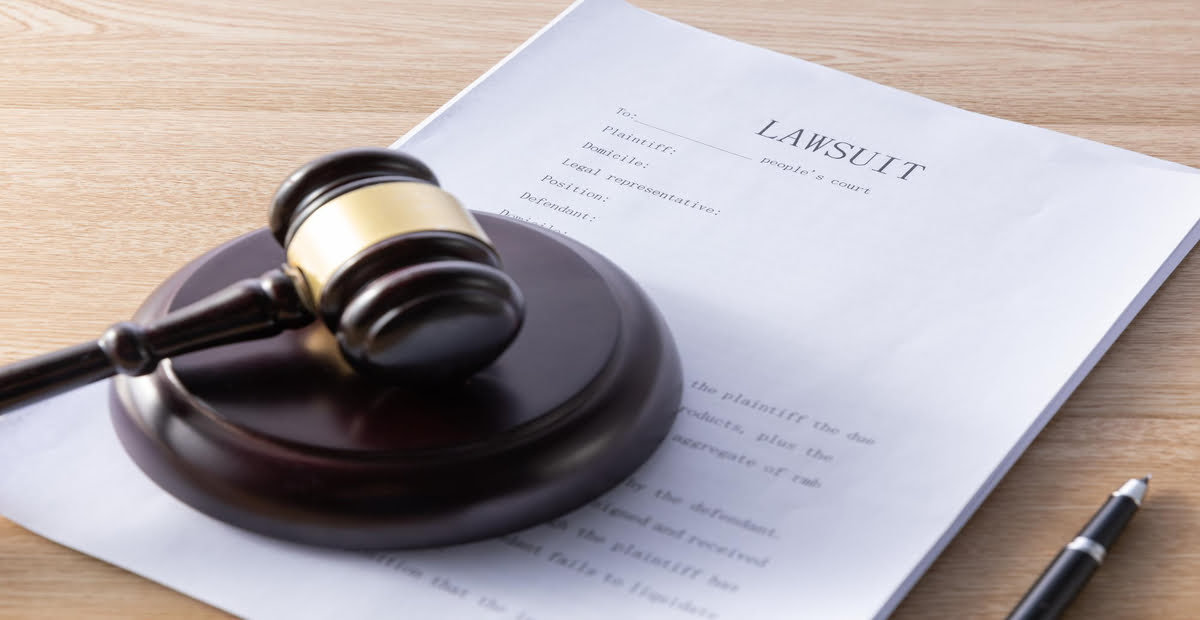If you’re a website owner facing an ADA non-compliance lawsuit, you’re likely feeling overwhelmed and uncertain about what steps to take next. But don’t panic yet. By the end of this article, you’ll have a clear plan of action and the confidence to protect your business from costly legal action. So let’s get started!
👀 See Now: Top Websites United States 2023 Accessibility Report
How Does the ADA Relate to Websites and Apps?
The Americans with Disabilities Act (ADA) is a federal civil rights law that prohibits discrimination against individuals with disabilities. It applies to jobs, schools, transportation, and all public and private places open to the general public. It aims to ensure everyone enjoys the same rights and opportunities, regardless of their abilities.
Although the ADA was established about 30 years before the Internet existed, its creators designed it to evolve. The concept of “places or public accommodations” is a core component of the law and is a perfect example of its flexibility. As technology has evolved, websites and mobile apps are increasingly important places to shop, learn, share, and connect. As such, these ‘digital public spaces’ are also covered under the ADA.
Several state courts have ruled in favor of plaintiffs in ADA lawsuits against businesses with inaccessible websites in recent years. This has given rise to a new legal niche that seeks to hold companies accountable for making their digital products accessible using the court system.
To put things in perspective, website accessibility lawsuits accounted for 37% of the ADA Title III lawsuits filed in 2022, an increase from about 25% in 2021. Some of these claims came from legitimate plaintiffs. But most were brought by lawyers and serial plaintiffs hoping to extort easy settlements.
The ultimate question is – how can businesses balance the moral and legal obligation to create accessible websites and protect themselves against malicious lawsuits?
How to Defend Your Business Against An ADA Lawsuit

1. Consult an experienced ADA defense attorney
The first step in defending your business against an ADA lawsuit is to contact an attorney with experience handling ADA lawsuits. They will review the complaint to determine its value and guide you on how to proceed. This involves responding to the claim within the stipulated 21 days.
2. Evaluate the claim
Next, you’ll need to evaluate the allegations to determine their validity. This means conducting an audit of your website to gather evidence that supports your defense. If you find that the claims lack merit and cannot be proved, your attorney can help you file a motion to dismiss the case.
3. Remediate your website
Make your website more accessible even if you think the claim is false. Your website visitors will appreciate this, and you can avoid further legal action. A web accessibility expert can help you understand what changes must be made to your website to comply with the ADA. These include adding alt text for images, using descriptive links, and providing video captions.
4. Gather useful documentation
Keep detailed records of all remediation efforts, including any communication with the plaintiff and their attorney. This can include screenshots of before and after changes, documentation of accessibility audits, and any correspondence related to the lawsuit.
5. Prepare for the mediation process
In many cases, ADA lawsuits are settled through mediation. During mediation, both parties will attempt to reach a mutually acceptable agreement. This can involve agreeing to a remediation plan or paying a settlement amount. This amount is often an average of 20% less than the first demand from the defendant.
6. Defend yourself in court
If the lawsuit proceeds to court, your attorney can represent you and present evidence in your defense. This can include documentation of your remediation efforts and any other relevant information. Your attorney will work to prove that your website complies with the ADA and that the claims are unfounded.
Remember that defending against an ADA non-compliance lawsuit can be complex and time-consuming. It is extremely important to respond promptly to a demand letter to minimize the impact of the lawsuit. You should also work closely with your attorney throughout the legal process to protect your business.
The Best Approach To Dealing With ADA Lawsuits
When faced with an ADA lawsuit, clients often ask how to approach and ultimately ‘win’ the case. However, the goal should not simply be to ‘win’ the case in the traditional sense. You don’t want to imply that it is okay to discriminate against people with disabilities. This could result in negative publicity and loss of consumers.
A better approach would be to expand the company’s accessibility to a broader audience that includes people with disabilities. Your motive should also protect your company’s reputation and preserve its relationships with customers and stakeholders.
🛡️Protect your website from ADA lawsuits with Flowy, our cutting-edge ChatGPT-powered technology for web accessibility!
How To Prevent An ADA Lawsuit
ADA lawsuits are often filed when people with disabilities encounter barriers when trying to access services on a website. These barriers can include a lack of proper alternative text for images, poor keyboard navigation, and insufficient use of color contrast. The following steps can help you avoid potential ADA litigations:
1. Conform to WCAG 2.1 AA standards
Your website is a digital public space and must comply with WCAG 2.1 AA requirements. Begin by reviewing the latest version of the WCAG standards and implementing measures to ensure that people with disabilities can conveniently navigate your website without discrimination.
2. Conduct an expert accessibility audit
If you’re unsure about your website’s WCAG conformance, engage an accessibility expert to conduct a comprehensive audit of your website. This involves automated and manual testing to identify accessibility problems and provide recommendations to remediate them. Keep in mind that manual testing is essential to uncover critical issues that automation alone cannot detect.
3. Hire website accessibility experts
While web designers can help ensure your company website is digitally accessible, they do not have the technical expertise to handle ADA-related accessibility problems. You need the technical knowledge of accessibility experts to detect errors on your website and remediate them as soon as possible
4. Address the most critical barriers first
When working towards ADA compliance, it is crucial to prioritize addressing the issues that have the most significant impact on website accessibility. High-visibility pages like your home and products/services pages are a good place to start. This is because they are likely to attract heavy website traffic since they are the most important pages users visit.
5. Train your employees on accessibility best practices
Your customer support team is often your first line of response to accessibility-related complaints from your visitors. Train them on how to escalate accessibility issues and complaints to the appropriate team to investigate and remediate them before a lawsuit is filed against your company.
6. Create a roadmap for ongoing monitoring
ADA compliance is an ongoing task that requires constant monitoring, testing, and remediation. Your website content is dynamic, so while it may be ADA-compliant now, any added content can introduce new accessibility errors. Ensure you hire the right web accessibility experts to monitor your website’s accessibility and fix any issues that may arise in the future.
Closing Thoughts
The best way to “win” an ADA web accessibility lawsuit is to proactively build and maintain accessible websites from the start. When faced with a demand letter, employ a skilled ADA attorney to evaluate whether the allegations are accurate. Your attorney would then help you decide whether to challenge the claim legally or work towards becoming compliant.
Receiving a demand letter can be a significant opportunity for a company to highlight its efforts toward becoming compliant and inclusive. This involves working with accessibility experts like Equally AI to create an ongoing roadmap to test, remediate and monitor your website to ensure it remains ADA-compliant and accessible to all.




